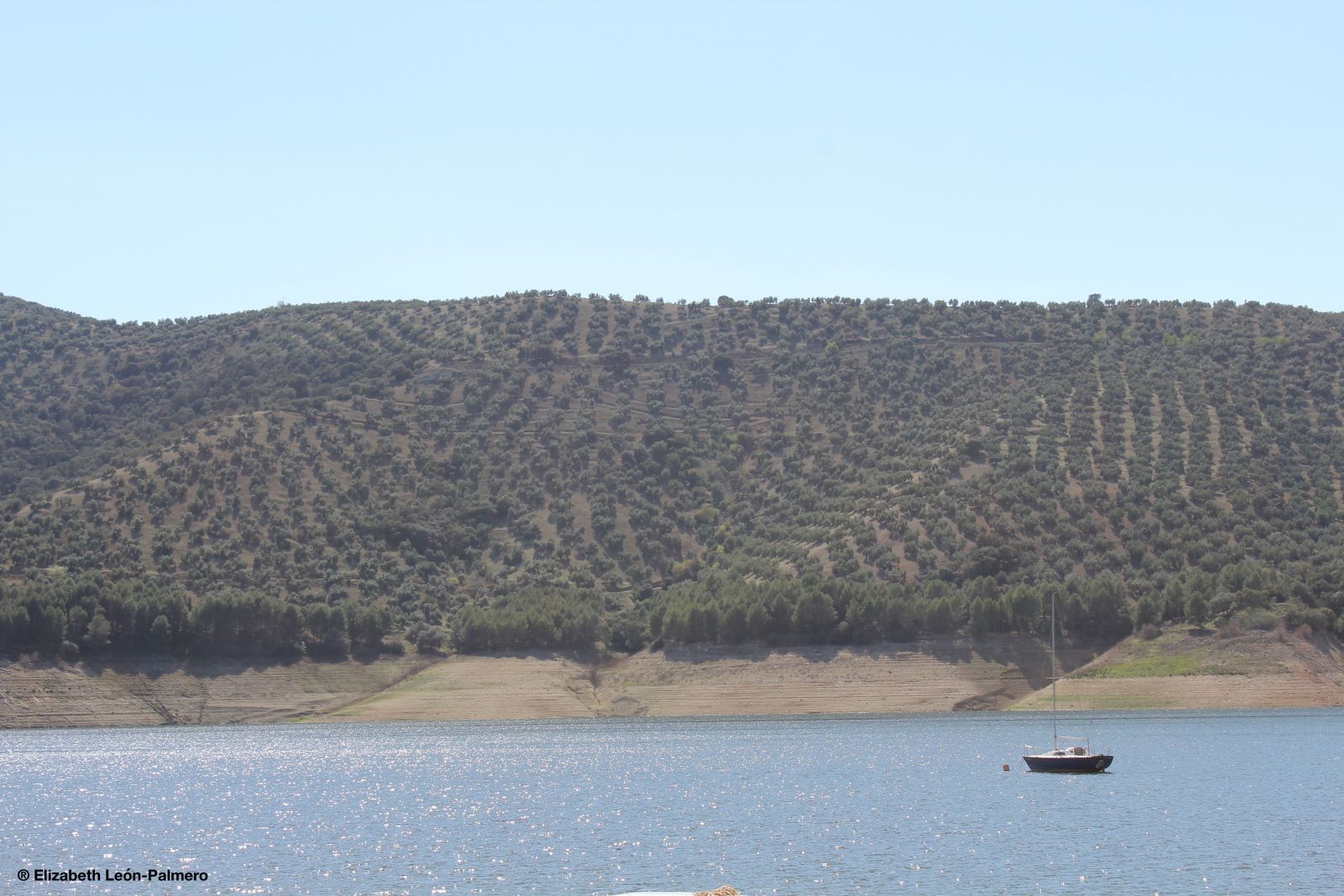Production or consumption of Nitrous Oxide? The role of Nitrogen and Phosphorus in Denitrification in Reservoirs
By Elizabeth León-Palmero and collaborators
 Nitrous oxide (N2O) is a potent greenhouse gas and the main ozone depletion agent. The production of this gas is mainly carried out by microorganisms such as ammonia oxidizing bacteria and archaea and denitrifying bacteria. The latter can not only produce N2O, but also consume it (transforming it into nitrogen gas, N2), and the activity of these microorganisms depends on the availability of nitrogen (N) and oxygen. Lakes and reservoirs often receive excessive N inputs from their watersheds, particularly in agricultural and urban landscapes, and they can develop low oxygen zones in their water columns, promoting the activity of these microorganisms. However, we know very little about the regulation and importance of N2O in these ecosystems. In this work we study the environmental and microbial factors that determine N2O concentration in 12 reservoirs during summer stratification and winter mixing. We found that N2O concentrations varied greatly among depths, reservoirs and seasons, and that denitrifying bacteria controlled the net N2O balance. They were present throughout the water column, but their activity and abundance were higher in depths with low oxygen, where they produced or consumed N2O depending on the N availability. In fact, we found the highest N2O production in deep N-rich, oxygen-poor waters. The abundance of denitrifying bacteria did not depend on the N, but on phosphorus (P) concentration and cumulative chlorophyll a (i.e., a proxy for organic matter produced from the lake phytoplankton). Both P inputs and organic matter generated by phytoplankton are typical components of a eutrophication scenario (excessive algal growth due to nutrient inputs), and therefore these bacteria could reduce excess N by denitrification, although they would produce N2O. In contrast, in an oligotrophic system, which is not affected by N inputs, denitrification could consume N2O in the water column and the system could act as a sink for this gas. Therefore, understanding the role of these microorganisms and nutrient inputs in aquatic systems is key to quantify the N2O balance between the atmosphere and these ecosystems.
Nitrous oxide (N2O) is a potent greenhouse gas and the main ozone depletion agent. The production of this gas is mainly carried out by microorganisms such as ammonia oxidizing bacteria and archaea and denitrifying bacteria. The latter can not only produce N2O, but also consume it (transforming it into nitrogen gas, N2), and the activity of these microorganisms depends on the availability of nitrogen (N) and oxygen. Lakes and reservoirs often receive excessive N inputs from their watersheds, particularly in agricultural and urban landscapes, and they can develop low oxygen zones in their water columns, promoting the activity of these microorganisms. However, we know very little about the regulation and importance of N2O in these ecosystems. In this work we study the environmental and microbial factors that determine N2O concentration in 12 reservoirs during summer stratification and winter mixing. We found that N2O concentrations varied greatly among depths, reservoirs and seasons, and that denitrifying bacteria controlled the net N2O balance. They were present throughout the water column, but their activity and abundance were higher in depths with low oxygen, where they produced or consumed N2O depending on the N availability. In fact, we found the highest N2O production in deep N-rich, oxygen-poor waters. The abundance of denitrifying bacteria did not depend on the N, but on phosphorus (P) concentration and cumulative chlorophyll a (i.e., a proxy for organic matter produced from the lake phytoplankton). Both P inputs and organic matter generated by phytoplankton are typical components of a eutrophication scenario (excessive algal growth due to nutrient inputs), and therefore these bacteria could reduce excess N by denitrification, although they would produce N2O. In contrast, in an oligotrophic system, which is not affected by N inputs, denitrification could consume N2O in the water column and the system could act as a sink for this gas. Therefore, understanding the role of these microorganisms and nutrient inputs in aquatic systems is key to quantify the N2O balance between the atmosphere and these ecosystems.Read the full study here:
León-Palmero, E., R. Morales-Baquero, and I. Reche. 2023. P inputs determine denitrifier abundance explaining dissolved nitrous oxide in reservoirs. Limnology and Oceanography 68: 1734–1749. doi:10.1002/lno.12381
Text written by Elizabeth León-Palmero and edited by Clara Ruiz and Félix Picazo
